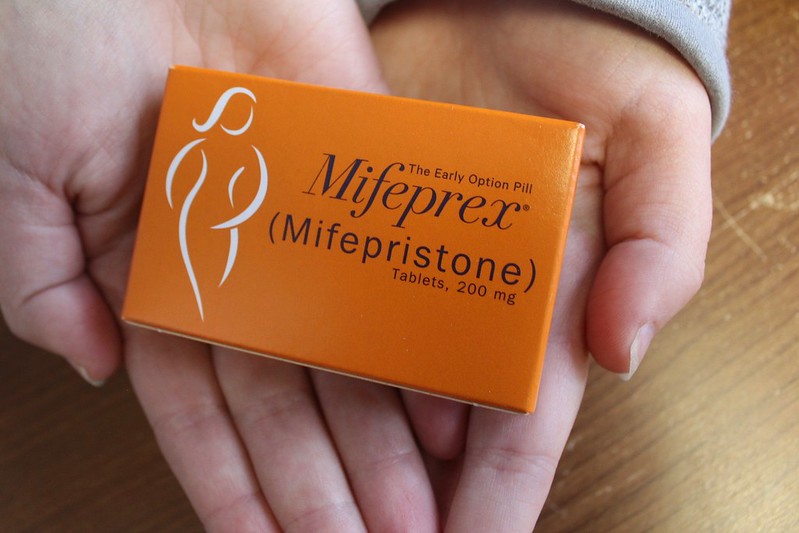Abortion by Mail
The FDA will now allow abortion pills to be distributed in the mail–permanently.
Quick take:
On December 15, the Food and Drug Administration announced the permanent removal of a controversial restriction on abortion pills. The restriction required mifepristone, the first in a series of two medications used for abortion, to be dispensed in a clinic, medical office, or hospital under the supervision of a certified prescriber, despite substantial evidence that such directives do not improve the safety or efficacy of the medication. Under pressure, the FDA had previously halted enforcement of this rule, and the permanent removal of this restriction means that medication abortion can be prescribed and mailed via telehealth.
Read more about the lifted restrictions:
F.D.A. Will Permanently Allow Abortion Pills by Mail Pam Belluck | December 16 2021
Read about the implications of this decision in a post-Roe world:
FDA relaxes controversial restrictions on access to abortion pill by mail Sarah McCammon | December 16 2021
What is the abortion pill and how does it work?
Medication abortion refers to a range of approaches using medication, most commonly mifepristone and misoprostol, to end a pregnancy. It’s typically a two-step process, mifepristone is taken first followed by misoprostol about 24-48 hours later. Mifepristone disrupts the pregnancy by blocking progesterone, a hormone necessary for the pregnancy to develop. Misoprostol causes uterine contractions, cervical dilation, and expulsion of pregnancy tissue similar to a miscarriage. Medication abortion is currently approved by the FDA for gestational ages up to 70 days, although research supports that these limits could safely and effectively be extended up to 77 days’ gestation. Abortion through mifepristone and misoprostol is safe and effective; the risk of serious complications is less than 0.5% and it is 95% effective (Jenkins et al).
Prior to the pandemic, F.D.A. rules stipulated that patients had to obtain mifepristone in-person from a certified provider (even though they could swallow the pill at home or anywhere else). This was the only medication the F.D.A required to be obtained in-person from a provider that did not need to be taken in the presence of the provider. Misoprostol, the 2nd medication, has long been available with a typical prescription. REMS regulations regarding mifepristone were temporarily lifted in light of the COVID-19 pandemic (Belluck).
Read more about the process and safety of medication abortion here:
Abortion With Pills: Review of Current Options in The United States Jenkins et al. | 2021
Why is permanent removal of the REMS ban important?
Requiring in-person dispensing does not improve safety.
In Canada, when a policy change made mifepristone available by prescription in the same way as other medicines, data from 84,000 abortions found no increase in complications. Another study showed that using telehealth to counsel and screen patients for medical abortion, and then mailing the mifepristone to the patients was also very safe: out of 1,300 telehealth abortions, less than 0.5% had a serious complication. Of the complications that did occur, none would have been avoided by requiring the medicine to picked up in-person.
In-person dispensing is an extra obstacle in an already-difficult process.
In many parts of the United States, access to abortion care is tenuous. Patients are often are met with a range of obstacles, including living far away from a clinic, lack of insurance coverage, and requirements for multiple visits or unnecessary diagnostic testing. These obstacles are already particularly burdensome for marginalized communities (eg, Black, indigenous and people of color; trans and gender non-conforming folks, poor people, and those living in rural areas). Requiring in-person dispensing is a burden that also falls disproportionately on marginalized communities. Termination of the REMS regulations means the abortion pills can be prescribed through telehealth consultations with providers and mailed to patients – thereby improving access to abortion care (Belluck). Additionally, telehealth abortion may help remove stigma associated with abortion, lower costs associated with clinician supported care, and afford patients greater privacy and autonomy (Jenkins et al).
Read the Canadian study on liberalizing mifepristone access here:
Abortion Safety and Use with Normally Prescribed Mifepristone in Canada Schummers et al.| 2021
Read the scholarly review on tele-abortion in the US here:
Expansion of a direct-to-patient telemedicine abortion service in the United States and experience during the COVID-19 pandemic Chong et al.| July 2021
What’s next?
Nineteen states still have laws making it illegal to provide mifepristone unless a physician is physically present, so the FDA’s announcement will not change access there.
Need help finding places to access abortion pills?
Check out Plan C’s interactive tool!
The Plan C Guide to Abortion Pills
You can also check out these other organizations:
Abortion on Demand
Hey Jane
Aid Access
Carafem
Choix
Just the Pill
Abortion Finder
Want to learn more about Telemedicine abortion? Check out other post!
Share this Post
